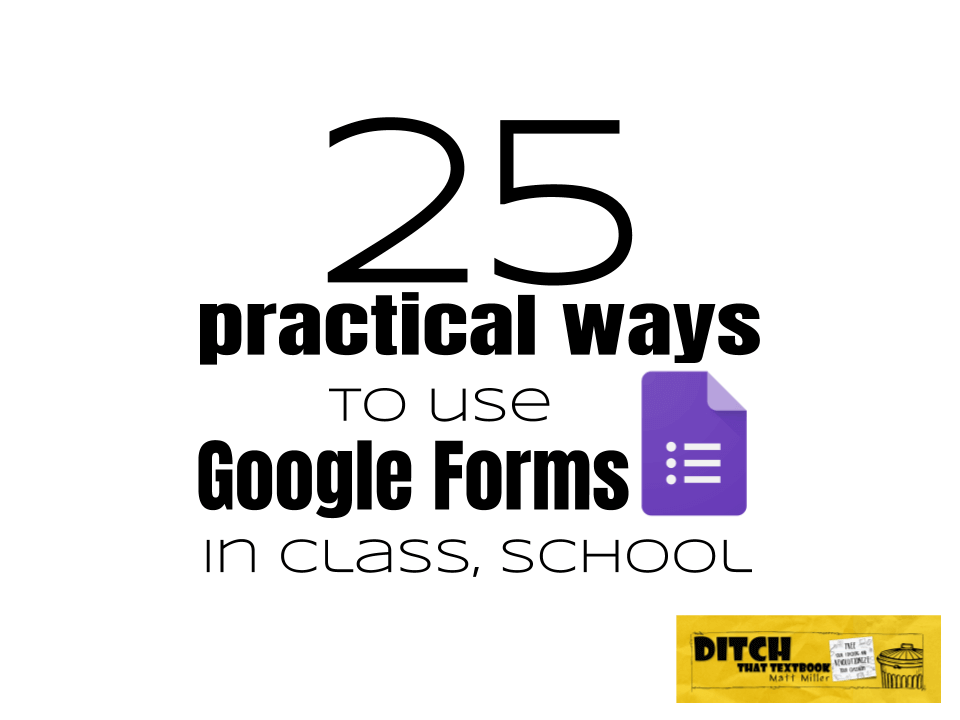
Google Forms give educators a powerful data collection tool. Check out these 25 ways to harness its power in school.
Everyone wants data. Schools want it to track student performance. Companies want it to learn about their customers.
We track data in our own personal lives (fitness data, banking data, even social media data).
Teachers and students have their own data gathering and tracking tool that’s free and easy to learn — Google Forms.
Google Forms lets you create a survey with lots of different kinds of questions:
- Short answer
- Long answer
- Multiple choice
- Checkboxes
- Drop-down menu
… and more. You can distribute these surveys to anyone — students, parents, even yourself — and track the data in the Google Forms app itself or in a spreadsheet.
Teachers have used Google Forms to do quizzes and assessments for a while. But that’s not the only way it can make our lives easier and better!
Here are 25 ways to use Google Forms in the classroom and in schools.
Procedural stuff
1. Opinion surveys — Want to get to know your students better or learn about their preferences? How about parents? Create a simple survey. Add a short answer question for the name, or if you want to keep it anonymous, leave it out.
2. Quick poll — A simple one-question Google Form makes getting the pulse of the classroom quick and easy. Closed-ended questions can be displayed as graphs immediately in with the “Responses” tab in the form.
3. Late work submission (with email notifications!) — When students use this form, they can provide assignment details and a link to any digital work to turn in. You can receive an email when they submit the late work form. In Forms, use the “Responses” tab and click the three dots menu button. Select “Get email notifications for new responses”. It will automatically send an email to the account you used to create the form. Here’s an example of a late work submission form you can use.
4. Sign-up sheets — Need students or parents to sign up to bring something to class, work the concession stand, etc.? Have them sign up in a Google Form! Want to eliminate a choice once someone has taken it (i.e. remove a time slot when it’s been claimed)? Use the Choice Eliminator add-on to remove that choice after someone makes it (so nothing gets claimed twice!). Check out the Choice Eliminator page to see how it works.
5. Sign-out sheets — Ditch the sign-out sheet when students leave and return from the room (or when they check equipment in and out). Use a Google Form instead! Use the CheckItOut add-on. It uses multiple choice, list or checkboxes questions. When something is signed out, it moves to another question — the signed-out group. When it’s signed back in, it’s moved to the signed-in question. Create a “Name” short-answer question and you can see the paper trail of who checked equipment in and out and at what time in the spreadsheet of results. This YouTube video (less than two minutes!) makes using the CheckItOut add-on crystal clear. Click to view what the form would look like, or click to make a copy you can edit yourself.
6. Lesson plans — Want to quickly create detailed lesson plans with standards, learning objectives, activity descriptions and more? Add all the parts you want included in those lesson plans in a Google Form. (Add all of the individual standards as checkboxes.) Then view your own form and start filling in information. Use the Autocrat add-on to turn your responses in the Google Form into custom-created documents. You’ll have a document with all of your lesson plan information for each day! These are great for turning in to administration, leaving for substitute teachers or filing away for next year. See the blog post I wrote with detailed step-by-step directions here!
7. Daily check-in — We want to connect with our students and know how they are doing every day. But it can be difficult to check-in with every student in every one of our classes. This daily check-in Google Form template created by Mari Venturino makes it simple and easy to get started connecting with all of your students.
8. Create a HyperDoc in Google Forms — Incorporate the lesson design that makes HyperDocs so effective in a Google form by including sections for students to learn or review the content, show what they know, share their thinking and apply their skills. You can even include links for students to explore once they have completed the task. Check out this blog post by Karly Moura that includes examples, creations tips, and a template to get started.
9. Customized email newsletters — Using a combination of Google Docs and Google Sheets (with an option to use Google Forms to input information), you can create personalized email newsletters with custom comments for every student. See the blog post I wrote with detailed step-by-step directions here!
Assessment
10. Autograded quizzes — If you create a quiz or other assessment with closed-ended questions, Google Forms will autograde it for you. Create your quiz and click the gear (settings) button. Choose the “Quizzes” tab and turn on “Make this a quiz”. You have some options in that window. Then, go through your questions and select the correct answer (your answer key).
11. Quizzes with Flubaroo — Flubaroo is an add-on to Google Sheets that can create a detailed grading summary with student results from an assessment. When students complete a quiz/assessment in Google Forms, click the “Responses” tab and click the little green Sheets button. This will create a spreadsheet of results from the quiz/assessment. Open that sheet. Flubaroo’s official user guide walks you through the steps of setting Flubaroo up to autograde your assessment. It creates a summary that shows average student grade, individual student grades (plus which questions each student got right or wrong), questions students struggled on, and more.
12. Exit ticket/bell ringer — Have students answer questions at the beginning or end of class with a Google Form. Add images, links, videos and more to the form to make it a richer multimedia experience. Then gather all of the student responses in a spreadsheet.
13. Quick grade log — To quickly mark a grade for simple assignments create a Google Form with every student’s name. When I did this, I walked around the room and had the form loaded on my iPad. I put each student’s scores into that form. Later, I pulled up the responses and transferred them to the grade book. Here’s an example form of what that might look like that you can copy into your Drive!
14. Flipped classroom assessment — The flipped classroom comes in many different shapes and sizes, but many teachers have students watch a video and then answer some comprehension questions afterward. This is easily done in Google Forms. Create a form with a YouTube video (created by you or found on YouTube) and questions. Here’s what a form like that would look like when students loaded it.
15. Rubrics — Create your rubric in a Google Form to make an easy place for you to assign grades and provide feedback to students. When you’re done grading and writing feedback, use the Autocrat add-on to turn all that feedback into a document. Share that document with students (or parents too!). Here’s what a rubric form could look like when you load it (click here). Here’s the document generated with the feedback for students (click here).
16. Add math equations to Google Forms with EquatIO Chrome extension —
- Teachers can use EquatIO to create math assignments and quizzes. Check out this video to learn more.
- After adding the extension click the EquatIO icon next to any question or answer in the Form.
- This will open the EquatIO toolbar at the bottom of your screen.

- Students can respond right in the Google Form creating math expressions including equations and formulas.
Get the tools, the practical ideas, and the inspiration to transform the way you use technology in the classroom!
- Lesson ideas and downloadable templates
- A companion webpage full of FREE resources (click here to access NOW)
- Brand new PIRATE engagement hooks
- Encouragement and motivation to start
Learning and creating
17. Logs (for exercise, nutrition, reading, etc.) — If students need to submit information in logs to track progress over time, Google Forms can capture that information easily. Create a form with the student’s name and all the information he/she needs to submit. Each time he/she submits, it’s logged into a spreadsheet where students can review that data and submit it to you.
18. Choose Your Own Adventure stories — By using branching (the “go to section based on answer” choice in the three-dots menu in a multiple-choice question), you can create fun Choose Your Own Adventure Story-type activities. Create them for your students or let students create their own! Here’s a math example from Mandi Tolen’s class.
19. Sharing examples in professional development — Teachers can use Google Forms to share their learning, too! During professional development, direct teachers to a Google Form where they can share their ideas, reflections or experiences from the classroom. Provide a link to the spreadsheet of results to everyone in the group. That way, when everyone’s done, each teacher can see everyone else’s ideas all in one place!
20. Answer with an image — With younger students, the old version of Google Forms was tricky because almost everything used text. Now, you can ask questions AND provide answers with images! Teachers can cue students verbally and they can answer by choosing the correct picture. When creating the form, just click on the answer to edit it and click the image button at the right. Here’s a VERY simple example of how to use images as an answer (click here).
21. Brainstorming with a word cloud — Provide a simple Google Form where students can reflect on what they’ve been learning, either with a sentence or a few individual words. When they finish, copy all of their responses from the spreadsheet and paste them into a word cloud generator like Wordle or Tagxedo. It will show the most common words larger in size than others, sorting the reflections of the class in a fun, visual form.
22. Personalized guidance via e-mail — Do your students (or teacher participants in professional development) need answers fine-tuned to their unique needs? Create a Google Form to let them choose the type of feedback they need, collecting their answers in a Google Sheet. Then, the Form Mule add-on can send them a custom e-mail response based on their answers. Basically, you write an email for every possible answer, and Form Mule sends it to them automatically when they submit the form. See more about Form Mule here.
23. Writer’s conference schedule — If your students need to schedule a time to meet with you to discuss their writing, the Form Limiter add-on can help. Create a form in Google Forms and it will gather the data you’ll need (name, class, time, etc.) in a Google Sheet. Form Limiter will stop accepting responses when specific Google Sheet spots are filled. No double-booking!
24. The Amazing Race, Google Style. This game is an intense mashup of Google Slides/Documents, Google Forms and Google Maps (optional). Students must complete several challenges provided by the instructor using Google Slides or Documents. Once the complete the first challenge in the slide presentation or document, they submit the link to the presentation/document in a Google Form. Once submitted, the link to the next challenge in the game is in a link on the confirmation page for the form. Clear as crystal, right? No? Check out this outstanding example by Michelle Green. Once you get it, this activity is super engaging.
25. Digital escape room locks — Use data validation to create a set of “locks” in a Google Form. This will make it so that the student MUST type in the correct answer in order to submit the form and “escape”.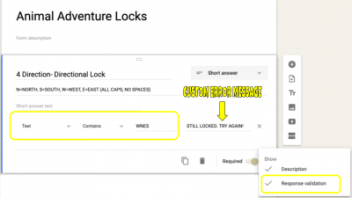
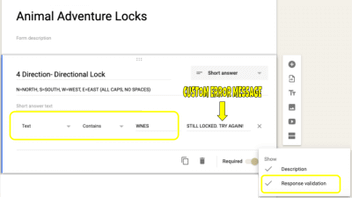
Check out this post for 30+ FREE digital escape rooms (plus tips and tools for creating your own) Want to try one out before you dive into using them with your students? This Ditch that Textbook themed digital escape room was created by Mandi Tolen and Karly Moura. Try and see if you can break free from Ditch That Textbook headquarters!
BONUS. Teach students how to make their own! — Show your students how to create their own Google Form and have them create one for their classmates. It’s a fun way for students to show what they know and creating the incorrect and correct answers levels it up. Who knows, they might even stump you!
For notifications of new Ditch That Textbook content and helpful links:
- like Ditch That Textbook on Facebook
- follow @jmattmiller on Twitter
- check out the #DitchBook community on Twitter
- follow Ditch That Textbook on Pinterest
- subscribe to the Ditch That Textbook YouTube channel!
Interested in having Matt present at your event or school? Contact him by e-mail!
Is Matt presenting near you soon? Check out his upcoming live events!

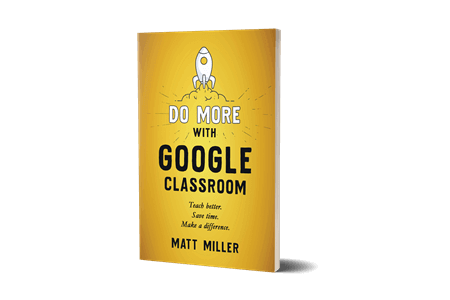

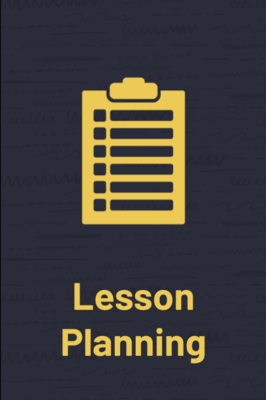
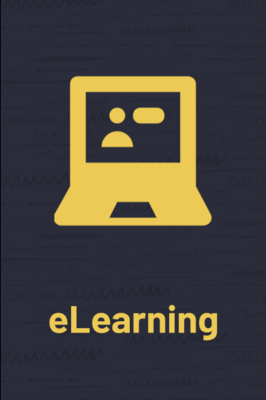

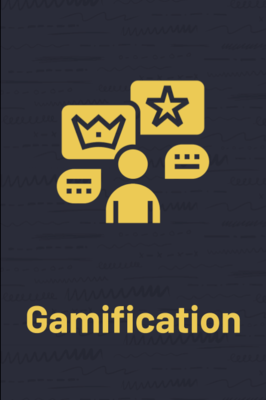
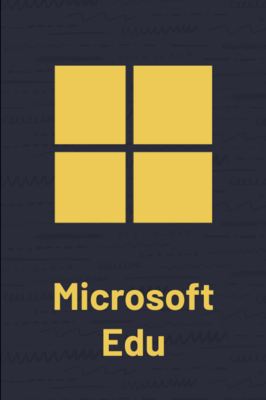

I want to know how to create a Google Form where my students upload a piece of writing (to save them all sharing a doc with me and clogging up my email).
I like individual information for students/parents. I also like the ability to make quizzes.
I would like to use this for digital escape rooms.
These are interesting ways to use google forms. I thought I am using google forms perfectly but you mentioned some ways that i will definitely try.
How do you add sound so that the question can be read to the students?
I was truly unaware of all the things you could create so many different things with Google Forms! I am excited to create new things.
If using Google Forms to make quizzes, use the Random Quiz add-on, which creates quizzes that students cannot cheat.
https://workspace.google.com/marketplace/app/random_quiz/1088430366430?pann=ogb
Hey, Thanks for sharing this informative post. I appreciate it a lot.
Thank you for my life.
Super.
Here is a question I have: How would you design a form for Recipe sharing in a closed group? I wanted a certain step by step flow to the Ingredients, Method and description to the recipe. Thanks
[…] 💡 Ideas for use: 25 practical ways to use Google Forms in class, school […]
[…] building relationships with your students or providing feedback on a recent assignment. Here are 25 practical ways to use forms in your […]
I have used google forms with my colleagues and to make a quick assessment of understanding.
[…] 20 Practical Ways to Use Google Forms in Class, School […]
[…] started with the inclusion of Google Forms and Kahoot to enhance students learning of their names and opened my lesson up to gems and push […]
[…] knowledge from the week to it. I was “pushed” to incorporate critical thinking to the Google Forms Quiz. When I made the quiz, I was very careful to include one logical choice in the answer choices. […]
[…] 20 practical ways to use Google Forms in class, school. Google Forms gives educators a powerful data collection tool. Check out these 20 ways to harness its power in school. (Google Forms logo used under fair use) Everyone wants data. Schools want it to track student performance. Companies want it to learn about their customers. We track data in our own personal lives (fitness data, banking data, even social media data). Teachers and students have their own data gathering and tracking tool that’s free and easy to learn — Google Forms. […]
[…] verbatims, photos, links to related websites and resources, and/or interactive media (such as Google Forms, AnswerGarden, or Padlet) to demonstrate their understanding and continued conversation on […]
[…] we will look at the results of the survey and talk a bit about how Google Forms works. Click HERE for some ideas on how else Google Forms can be used in […]
Outstanding article and even more valuable all the forms and links to videos, etc. to teach how. I have been with you most of my evening and am so excited to apply what I learned. Thanks for the quality resources. WELL DONE!!! Thanks. I will be back.
Hi, i am Olivia from USA want to tell something about vcall fitness tracker. It is not only a tracker but a
fashionable product. Vcall fitness tracker.
It changed my position. I am using it and it is 100% working. Now, it is working as my
coach, guider and good friend who is caring me all time.
Hey Matt!
Thanks so much for the resources! They’re awesome! Just wanted to let you know you need to update the sharing permissions on the copy of “Sign Out Sheets” as it tells me I need permission to view it. Thanks for sharing.
Cheers,
Amit
[…] Je hebt ongetwijfeld ooit al een Google Formulier ingevuld. Afgelopen najaar verscheen op de blog Ditch That Textbook een interessante post over deze heel gebruiksvriendelijke enquêtetoepassing van het technologiebedrijf: 20 practical ways to use Google Forms in class, school. […]
[…] Practical ways to use Google Forms […]
[…] Hi Edwin. One of the main tech tools i could see myself using in my class would be the google forms. I think this will be a good way to judge where my students are in their learning and what I need to concentrate on. Here is a link to a site that has different ways to use google forms in the class https://ditchthattextbook.com/2016/09/08/20-practical-ways-to-use-google-forms-in-class-school/ […]
I use Google forms for project teams to log project management progress reports. I auto-capture email addresses but also ask students to enter team members names in comments. Then I add a drop down of teams for them to select in future updates. This is a simple way for teams to self-evaluate daily and also communicate to me any issues they are having.
I’d love to see a couple more examples of the Amazing Race Google Style. I love this idea and trip over myself trying to be creative.
[…] 20 Practical Ways to Use Google Forms in Class, School– Matt Millar at Ditch That Textbook always has some good posts. […]
I use a form for my Bluebonnet Aeard readers to report their progress. It is set up to automatically populate a chart and award them a “badge” for each title reported. http://Www.dentonisd.org/wilsonlibrary
Click on the link provided on that page to see the chart of badges .
I looked for the Autocrat add on and couldn’t find it in forms. Is that the correct place? All I could find was docAppender. I would really like to use the rubric and the feedback but need this add on to make it worth it. Thanks.
It’s a Google Sheets add-on — https://chrome.google.com/webstore/detail/autocrat/ppgnklghfnlijoafjjkpoakpjjpdkgdj?hl=en-US
Is the FormMule link the correct one you wanted to include here? I thought it was from New Visions.
Yep, you’re right! Updated the link. Thanks for catching that.
We love creating a password for Google forms. When used in a classroom setting, creating a password for your Google Form gives the instructor control over when students access the form (There are several good videos demonstrating the easy process). Students won’t be able to enter their information in the quiz, poll, or survey until the teacher releases to them the password that allows the students to continue.
Hi all,
I am a tech integration specialists and I have a group of gym teachers that want to track fitness data as a class of students work toward their presidential fitness goals. Has anyone done this in the past that can offer a few helpful hints?
Hi Laura — That can definitely be done. I have two ideas —
1. Students can create their own Google Forms. They’d just need to create text fields for the information they want to track (i.e. time, distance, etc.). Forms automatically logs the time and date when the entry is made, so they wouldn’t even need a field for that (unless you want them to be able to add them later).
2. Create a class form. Use the drop down menu to list all of the students’ names. Choose the student, then add the pertinent data. The spreadsheet generated by the form will let you sort by student name, so that student can see all the data associated with his/her name.
Hope that helps!
I think the gym teachers would go with option 2. Here’s another question:
The presidential fitness tests are given 2 times. What if they wanted all the data on one spreadsheet. For instance if the student accessed the drop down menu in September to enter their baseline results, could they use the same form when they are tested again in April to enter the second round of tests? Doesn’t this create another row and each student would have 2 rows for their name? Is there a way to have the results populate in the same row even though the fitness test results were entered into the form in separate submissions? Is there a better way to do this? Thanks for your help!
The teacher could also make a form and save it as a template in the template library. Then, students could get their own editable copy of the form from the template library (I would probably make a custom short link to the template). The best thing about this is that the kiddos will be able to graph and analyze their own data by moving their form results to a spreadsheet. So, if your teacher were to use this regularly, kids could see their growth over the year.